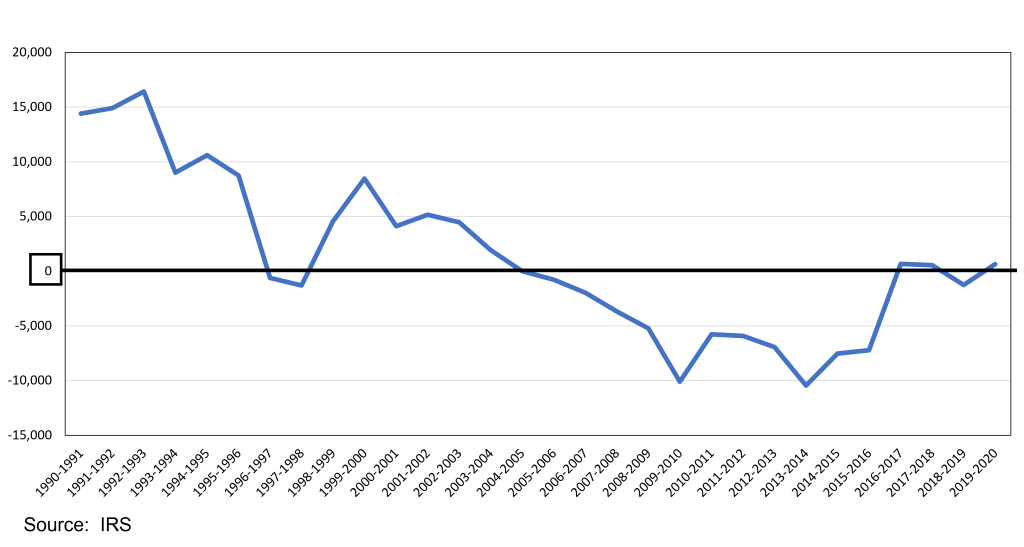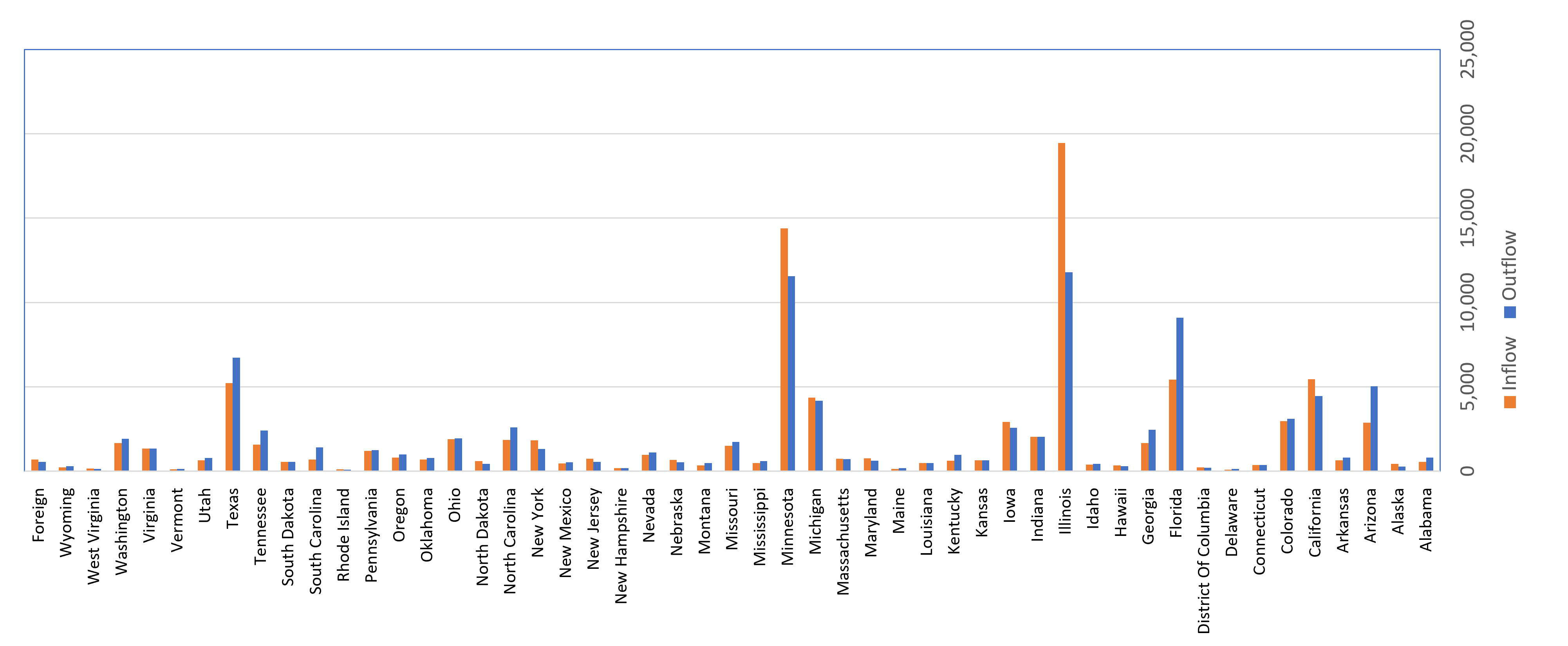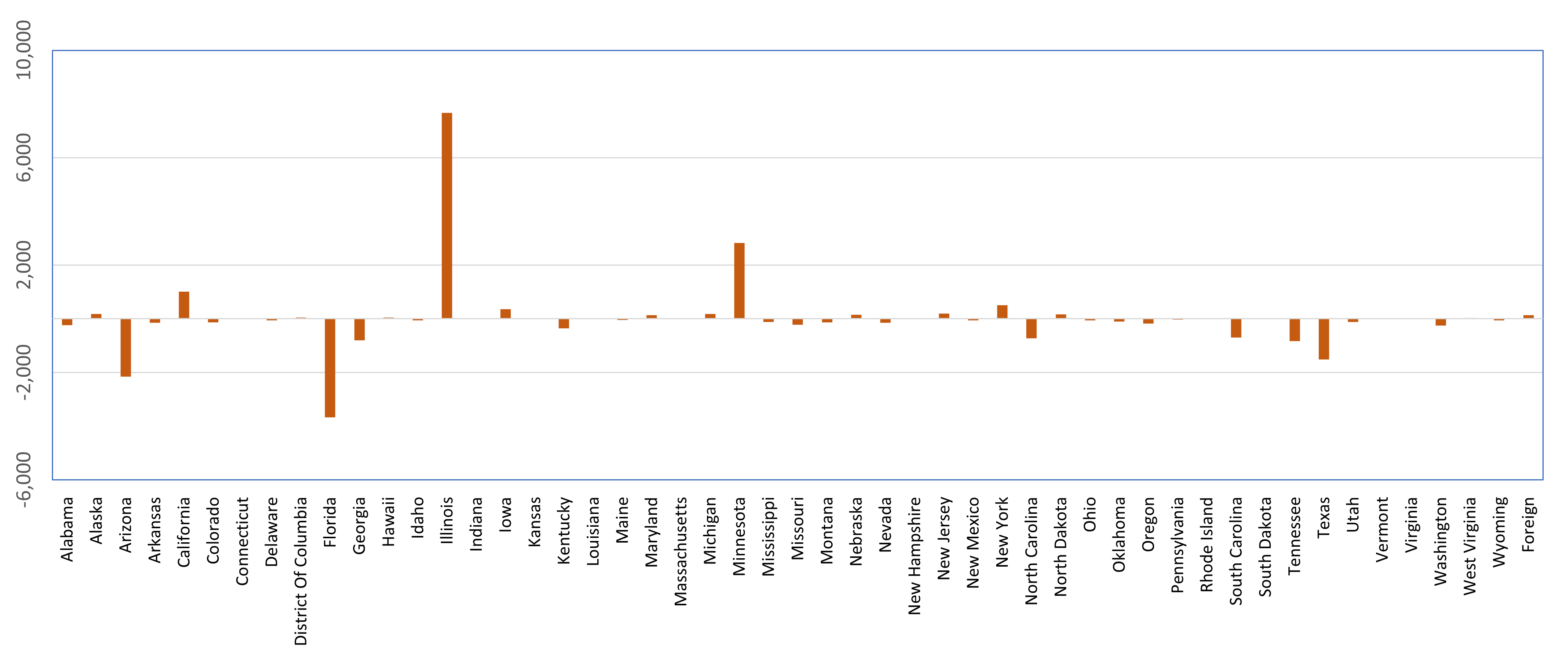(Image Source: Timon Studler / Unsplash)
Wisconsin IDEA
Insight • Data • Economics • Analysis
Greatest Net Migration from Illinois and Minnesota, Largest Loss to Florida, Texas, and Arizona
To help think through policy options to address what seems like persistent labor shortages it is important to understand migration patterns. For example, there is a widely held belief that Wisconsin suffers from a “brain drain” where more highly educated and skilled people are leaving the state. Prior research has suggested that the outflow from Wisconsin of these people is about what might be expected, Wisconsin lags in “brain gain”. In other words, people, particularly those with higher levels of education, are not moving to Wisconsin.
Figure 1. Wisconsin Net Migration

Using data from the International Revenues Service (IRS) tax returns, not only can we track Wisconsin net migration rates but also which states are the origin of in-migrants and destinations of out-migrants. From 1990, the first year of the IRS data, to 2004 Wisconsin tend to benefit from positive net migration or more people moving into the state relative to those moving out (Figure 1). Starting in 2005 Wisconsin tended to lose population through negative net migration. More recently, net migration has been modestly positive. A natural question is what drove Wisconsin from a net gainer of people from migration to a net loser. It is not surprising that the greatest flow of people into and out of Wisconsin is from our neighboring states of Illinois and Minnesota.
Figure 2. Wisconsin Migration Flows, 2019-2020

Between 2019 and 2020, the most recent year for the IRS data 11,780 people moved from Wisconsin to Illinois, but 19,440 people moved from Illinois to Wisconsin for a net gain of 7,660 people. Wisconsin also experienced a net gain of 2,820 people from Minnesota (11,560 moving from Wisconsin to Minnesota and 14,380 moving from Minnesota to Wisconsin).
Part of this flow can be explained by the growth of the Twin Cities metropolitan area into western Wisconsin and the Chicago metropolitan area into southeastern Wisconsin.
Figure 3. Wisconsin Net Migration Flows, 2019-2020

Continuing long-term trends, particularly as the Baby Boomer generation relocate in retirement, Wisconsin is losing population to some of the “sunshine states”. For example, 9,090 people from Wisconsin moved to Florida with only 5,420 people moving from Florida to Wisconsin. This represents a net loss of 3,660 people to Florida. Similarly, Wisconsin experienced a net loss of 2,150 people to Arizona and 1,500 people to Texas. On a more positive net, Wisconsin had a gain of just over 1,000 from California.













